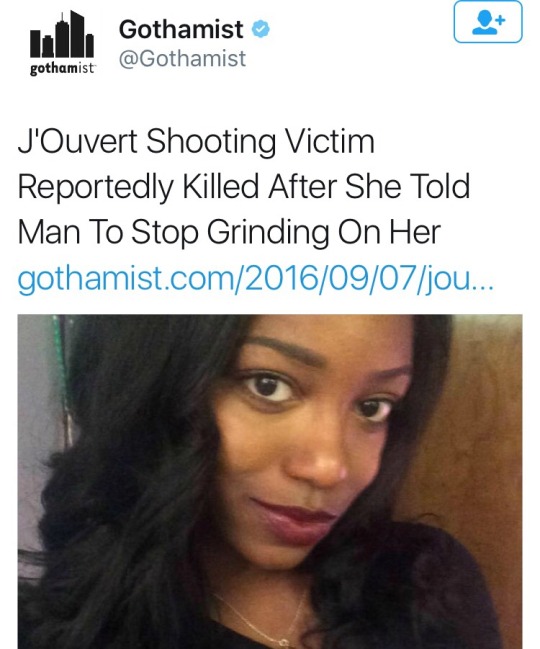Note
You're acting like women don't get offended when a man they think is out of their league "dares" to speak to them. How not to be an asshole goes both ways you know.
The difference is, there’s literally a systemic pattern of straight men behaving like this, and it’s socially acceptable for them to do so.
Women as a group usually turn guys down as politely as humanly possible, because men routinely commit violence against or even murder women for saying no, thanks to a fucking epidemic of lethally toxic male entitlement. Of course, it’s hard to be as polite as a guy wants when what he considers “polite” includes, at a minimum, lots of compliments and reassurances with his “no”, regardless of how repulsively he’s acted toward you – and often, for you to “give him a chance” because “how can you know you won’t like him?”
And people will go along with it. Women often face social sanctions from entire social groups for turning down men not-gently-enough or for saying no at all. Women murdered by men for saying no are often blamed after their deaths; people will say “Wow, why didn’t she give him a chance and avoid all this?” even with literal proof that the man she was saying no to was willing to commit murder.
Women as a group also face social stigma for approaching men even if they otherwise suit his preferences, because of ridiculous social rules that say to approach a man means the woman must be “desperate”.
But it’s far worse for people who don’t suit a guy’s preferences, because the idea of being associated with socially marginalized groups is so repellent to men that they can become physically violent - and they often get away with it.
Trans women bear the brunt of this, as men have routinely successfully argued in court that they had no choice but to commit murder because a woman who flirted etc with them happened to be trans. Gay men, too, face huge risk if they accidentally flirt with a straight man, because again, straight men literally get away with just saying “I was so grossed out I panicked! So I shouldn’t face repercussions for committing violence!” (Look up the gay and trans panic defenses.)
Like, yes, women are capable of meanness too, but you’re ignoring the entire cultural context of male entitlement that discourages women from even saying no at all, because just saying no is considered “mean”. Women who have the social power to feel safe being as cruel as men are to women they aren’t attracted to, are generally acting on other axes of privilege, like a white woman being horrible to a man of colour.
When I gender my social commentary, it’s because I’m pointing out a trend that falls along gendered lines. There will often be individual exceptions, but there is a gendered pattern to this behaviour that shouldn’t be ignored.
563 notes
·
View notes
Photo
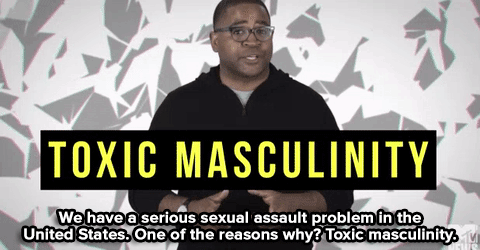







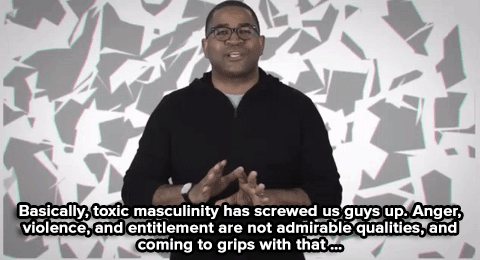

Watch: Jamil Smith goes on to list 4 ways men can detox and fight rape culture.
55K notes
·
View notes
Quote
Last year Americans were less likely to be killed by Muslim terrorists than for being Muslim, according to Charles Kurzman of the University of North Carolina. The former is a risk of approximately one in six million; the latter, one in one million. The bottom line is that most years in the U.S., ladders kill far more Americans than Muslim terrorists do. Same with bathtubs. Ditto for stairs. And lightning. Above all, fear spouses: Husbands are incomparably more deadly in America than jihadist terrorists. And husbands are so deadly in part because in America they have ready access to firearms, even when they have a history of violence. In other countries, brutish husbands put wives in hospitals; in America, they put them in graves.
Husbands Are Deadlier Than Terrorists | NY Times
(via fullpraxisnow)
212 notes
·
View notes
Link
In Getting Off: Pornography and the End of Masculinity, Robert Jensen analyzes contemporary mainstream (most commonly rented or purchased) heterosexual pornography as one key method of domination in the US patriarchal system of oppression, along with its effects on both men and women. Jensen argues that pornography has normalized and mainstreamed a particular conception of sex as both violent and degrading. He details how mechanisms of power are eroticized and unchallenged, where men dominate, and women’s sexuality is objectified and commodified. Jensen labels and rejects systems of oppression as anti-human and inconsistent with general principles of justice. He demonstrates how pornography reinforces patriarchy through misogyny and racism, and he challenges men to interrogate their relationship with pornography, their positions of dominance and control in their relationships, and to stop participating in sexual exploitation industries.
Lopez, A. L. (2016). Getting Off: Pornography and the End of Masculinity by Robert Jensen (review). Feminist Formations 28(3), 266-268. The Johns Hopkins University Press. Retrieved May 15, 2017, from Project MUSE database.
0 notes
Photo
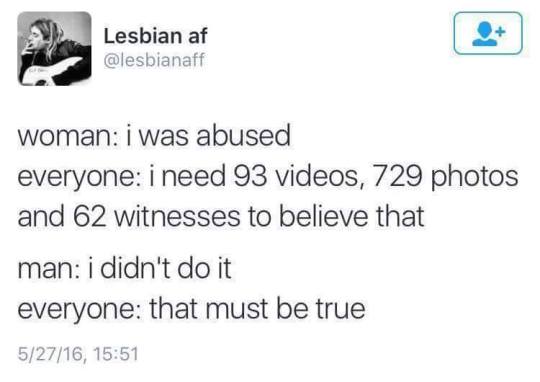
14K notes
·
View notes
Photo
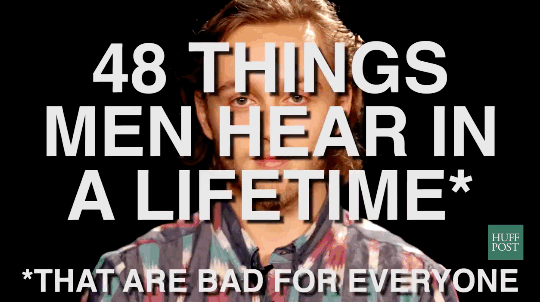
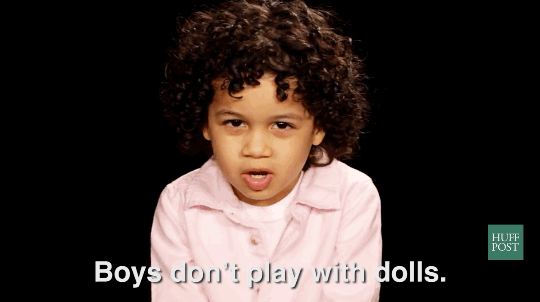


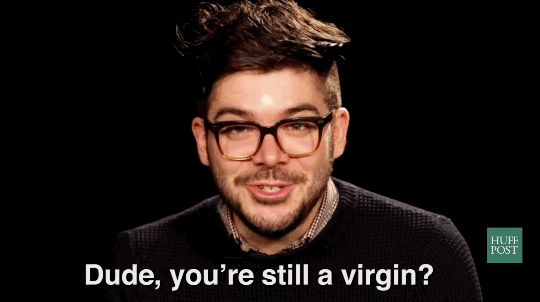





Watch: How toxic masculinity follows men from birth to death.
492K notes
·
View notes
Photo



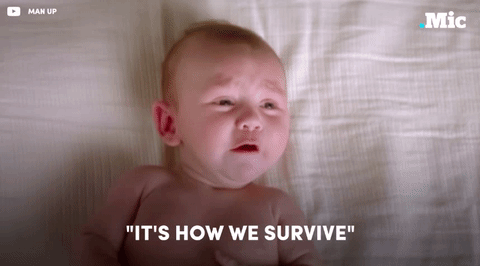



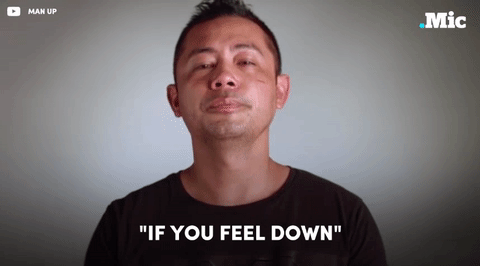
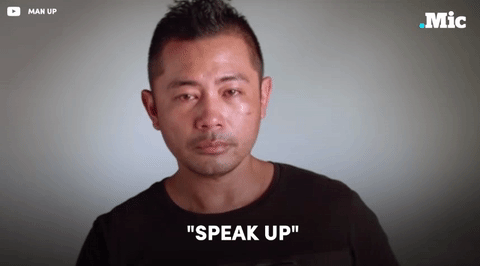
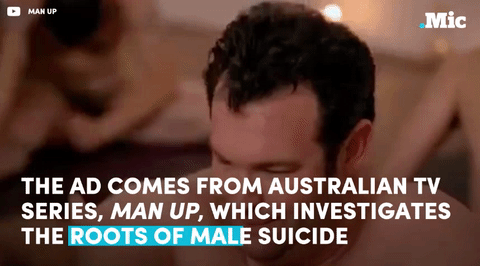


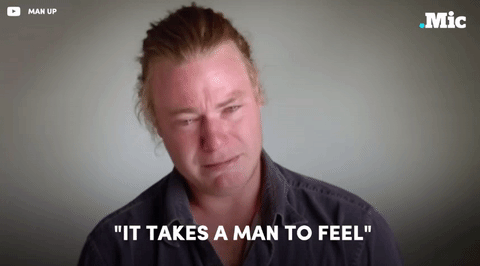
this is so great. fuck toxic masculinity. we need something like this stateside (x) | follow @this-is-life-actually
426K notes
·
View notes
Photo




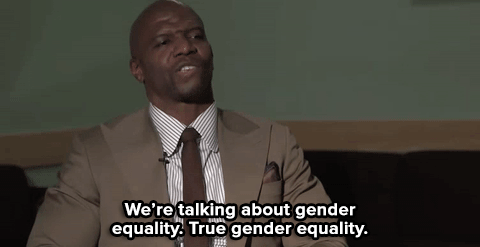





Watch: Terry Crews has some brilliant points about feminism — including an apt parallel to Civil Rights.
244K notes
·
View notes
Link
“The troubling nature of Kendrick Lamar’s ‘stretch marks’ comment”
Lillian Andemicael
Published April 6th
Following the release of his "Humble" video, Kendrick Lamar emerged as an unlikely feminist hero for some. The rapper has never shied away from expressing political commentary, but his latest attempt to promote self-love has divided fans.
Both Time and Vogue expressed support for the "Humble" video, the latter calling the song a "powerful message of feminist support." Even the uber-woke Amandla Sternberg signaled her support for the video with a screengrab on Instagram. But Lamar's attempt to promote self-love and his intense praise for destroying misogyny in a song that uses bitch 40 times feels half-hearted at best.
In the video, Lamar raps: "I'm so fuckin' sick and tired of the Photoshop/ Show me somethin' natural like afro on Richard Pryor/ Show me somethin' natural like ass with some stretch marks." These seemingly innocent lyrics are amplified when we watch a traditional video vixen transform into a natural beauty, flaunting her stretch marks and tightly coiled curls.
Both Time and Vogue expressed support for the "Humble" video, the latter calling the song a "powerful message of feminist support." Even the uber-woke Amandla Sternberg signaled her support for the video with a screengrab on Instagram. But Lamar's attempt to promote self-love and his intense praise for destroying misogyny in a song that uses bitch 40 times feels half-hearted at best.
Men have chased the "effortlessly beautiful" archetype both in and out of music. This isn't the first time Lamar expressed his disapproval for cosmetics, releasing the song "No Makeup (Her Vice)" on his debut studio album, Section.80. Other commercially successful rap songs like "Best I Ever Had" and "Love Me" lessen the importance of cosmetics, making mascara sound like a tool for the insecure. At the surface, these lyrics seem innocent — perhaps even progressive — but that erases the large role men already hold in the discussion of beauty.
A myriad of songs in hip-hop already try to control the conversation on beauty. Light skin women and those with eurocentric features are praised, while darker-skinned women are excluded. But when men try to dictate the conversation on beauty, they are, by extension, propagating beauty ideals.
We shame women for relying on makeup to feel beautiful, while at the same time surrounding them with unrealistic beauty standards. Men with all forms of bodies crowd pop culture; sitcoms are filled with couples that depict an overweight man with a thin, beautiful wife, but rarely do they display the opposite. And when they do, the characters are reduced to awkward caricatures, rather than multidimensional people.
Though this university's campus consists of people from all walks of life, it's easy to forget what "normal" people look like. According to a data collected from StatisticBrain, 80 percent of women say the images of women in the media make them feel insecure, while 58 percent of college-aged women feel a pressure to be a certain weight. Lamar ostensibly believes his lyrics subvert our media's depiction of what constitutes the female allure. But in truth, it's frustrating; Lamar demeans women's efforts to impress others as a form of insecurity, and one that men must rescue them from.
It's annoying to walk on eggshells to avoid offending our peers, but there are great costs to not caring. Eating disorders have the highest mortality rate of any mental illness. And efforts like these to uplift women who may struggle with self-worth — no matter how well-intentioned — can easily do more harm than good.
#Kendrick lamar#humble#toxic masculinity#beauty standards#stretch marks#poc#black women#misogyny#music#analysis
0 notes
Link
Female activists of color Demita Frazier, JD (a lifelong political activist), Barbara Smith (a black feminist author and activist), Stacey Patton, PhD (an award-winning journalist, historian, and child advocate), and Mecca Jamilah Sullivan (assistant professor of Women, Gender, Sexuality Studies at the University of Massechusetts, Amherst), come together - via email, according to the article - to talk about their experiences and ideas. This discussion includes questions about political identity, working and interacting across generations (from the experience of the panelists), thoughts on the growth-based needs of the younger and older generations, current and important issues, and includes a reading list near the end.
RACE, GENDER, AND GENERATIONS. (2017). Women's Review of Books, 34(2), 3-10.
#black feminism#womens review of books#black activism#black lives matter#organization#movement#politics#cross generation#panelists
0 notes
Link
This article focuses on deconstructing and discussing social constructions of gender among male university students in Zimbabwe. In southern Africa, masculine sexuality is manifested in society’s classification of ‘normal’ men as being associated with multiple partners and power over women. The study of masculinity and fatherhood in the context of Zimbabwe is a field of academic study that has suffered long and unnecessary neglect, according to Muparamoto. The role that gender also plays into making young men susceptible to acquiring HIV infection has been most often overlooked and ignored by researchers.
Muparamoto, N. (2012). ‘Trophy-hunting scripts’ among male university students in Zimbabwe. African Journal Of AIDS Research (AJAR), 11(4), 319-326. doi:10.2989/16085906.2012.754831
#toxic masculinity#trophy hunting#misogyny#zibabwe#university students#attitudes#cultural factors#gender issues#sexuality#social anthropology#southern Africa
0 notes
Link
In 2015, the Canadian federal government announced a long-awaited inquiry into violence against Indigenous women and girls. This article recommends an expressly Indigenous feminist framework in order to comprehensively address the issue of male violence against Indigenous women and girls in a national inquiry. A MUST READ.
Smiley, C. (2016). A Long Road Behind Us, a Long Road Ahead: Towards an Indigenous Feminist National Inquiry. Canadian Journal Of Women & The Law, 28(2), 308-313. doi:10.3138/cjwl.28.2.308
#toxic masculinity#rape culture#indigenous feminism#indigenous women#for-profit#prostitution#male violence
0 notes
Link
In this article a comparison is made by the author(s) of television shows for preschoolers and young children now, as opposed to the 70′s. The discussion furthers into how it has become important to monitor the cognitive, environmental, and behavioral influences that children experience, because they learn through their own experiences, as well as from modeling what they see and learn from the outside world.
MIN, L., & MAROON, E. (2016). SUPER POWER PLAY. Bitch Magazine: Feminist Response To Pop Culture, (72), 36-41.
0 notes
Text
The Shooting in Orlando, Terrorism or Toxic Masculinity (or Both?)
Syed Haider
First published September 16th, 2016
Abstract
News coverage of the shootings in Orlando highlighted a tension between the two frames broadcasters used in their reporting. Was this a homophobic hate crime or was this terrorism? Many elided the difficulty by calling it homophobic terrorism, but this could not resolve the tension. This article contends that because terrorism is closely equated with radicalized Muslims, the tension was sublimated into an existing orientalist frame where homophobia became a marker of fundamentalist Islamic culture. Instead, this article argues, these two frames should not be taken as cause and effect but as problems that share a common ailment: the presence of toxic masculinities. Beginning from a position that sees masculinity as constituted through violence in patriarchal culture, this article works through the idea that when there is a disillusionment with violence, masculinity under patriarchy turns toxic. What emerges then is not merely violence but “rage” as the praxis of toxic masculinities.
Like many, I watched the horror of the Orlando shootings with alarm. As a Muslim, I watched it with dismay, knowing that yet again the media spotlight would fall on the religion I practice and feel helpless to rescue from the murderous cult currently ravaging its reputation and image. As a gay man, I was affected by the homophobia that informed Mateen’s worldview and determined his choice of target. Standing on intersectional borders with multiple identities, I wondered how to (re)cognize the horror depicted through news agencies. Soon though, I became fascinated by the competing frames that news broadcasters deployed to help cover the shootings. Was this terrorism, plain and simple? An attack on “our” freedoms and values? Was this a homophobic attack, driven by insecurity in the perpetrator’s own sexuality and better seen therefore as a hate crime?
Disagreement about frames was played out almost immediately in a Sky News segment when journalist Owen Jones walked off set, appalled at presenter Mark Longhurst’s failure to recognize the shooting as a homophobic assault. As a gay man, said Jones, “I will not have people … appropriating [this incident]—people who never speak about gay rights, except when this happens, if they think a Muslim is involved then they’ll jump on the band-wagon and spout as much bile as they want.” He went on to state passionately that he was proud to live in a city where a Muslim mayor supported the right of lesbian, gay, bisexual, and transgender (LGBT) people to get married in defiance of many within the Muslim population (Sky News, 2016).
Something in Jones’s anger resonated with me and I thought of Jasbir Puar’s (2007) monograph, Terrorist Assemblages: Homonationalism in Queer Times. In that volume, Puar points out the way in which the LGBT subject has emerged as a new site through whom discourses of nationalism, American exceptionalism, and a broader right-wing imaginary is writ large. The queerness, I guess, consists in the oddity of discourses and political positions that previously (as recently as a generation ago) would have eschewed association with LGBT communities, now appropriating the homosexual subject, transforming him or her or they into an object by which to index anew minorities deemed progressive and those branded regressive. Despite being gay and belonging to a community that is often hostile to notions of diversity in sexuality, I nonetheless welcomed Jones’s cynicism and Puar’s suspicion of the process of homonationalism. The issue of LGBT rights remains an important civil rights movement that has the potential to reimagine the world for the better, and I feel strongly that it should not be instrumentalized for propping up the status quo and/or vested xenophobic and prejudicial interests.
The frame therefore was important. Should the tragedy in Orlando be seen primarily as an act of terrorism or a dreadful example of homophobia? Some broadcasters got around this thorny issue by utilizing both terms (calling the incident an act of homophobic terrorism). Following the news coverage carefully though, it occurred to me that this did not solve the problem. After all, the question that immediately follows such a move to admit both as (equal?) causal explanations is: What is the relationship between these two frames? Was homophobia a symptom of the radical Islam (and the Daesh militia) to which (and to whom) Omar Mateen swore allegiance? Those wishing to foreground the terrorism frame insisted this was the case. To essentialize and locate Muslim violence and homophobia in the religion of Islam has long been the method of Islamaphobes in Muslim and non-Muslim countries. It is a standard refrain within the narrative spun by proponents and advocates of the war on terror, since it marks Islam and its adherents as the “other” of the West—read Christian, civilized, democratic, progressive, and so on.
Instead, I want to forward an alternative position and one that I feel is more fruitful in terms of reengaging the tired and floundering discussions of terrorist violence (pushed too often into simplistic divisions of good Muslim vs. bad Muslim, modernity and the unmodern, and the ideological bias underpinning the discredited conveyor belt theory of radicalization). Rather than simply admitting both frames, I suggest reframing terrorism and homophobia not as cause and effect, but as conditions that share an underlying ailment, and that is the problem of toxic masculinity. By positioning the discussion in this way and laying the emphasis on homophobia (to begin with at least) retrieves from the tragedy of Orlando a new perspective. It frames homophobia as the problem, asking all communities and populations to consider this prejudice—be they Muslim, white Caucasian, black or Latino, and Christian or Jew. It raises the question of patriarchy and patriarchal constructions of a heteronormative masculinity that regards violence as both natural and integral. It opens up a discussion of the patriarchal underpinnings of securitocracy and the agencies and industries of a capitalist order in which food and water shortages plague the world, yet the manufacture and sales of firearms and other weapons offer ever more lucrative il/legal routes to making “a killing.” It would suggest that as a mode of violence, terrorism today (to bring that frame back) has something to do with the structure of patriarchy, and that what all terrorisms share is a certain toxic masculinity, regardless of the vocabulary that proponents of various “causes” expropriate.
In my interpretation, it is the struggle over frames that provoked Owen Jones’s frustration in the Sky News studio. To favor the terrorist frame collapses the discussion back into the frayed sociolect of right-wing commentators, security experts, and politicians. The Orlando atrocity becomes merely a footnote in this saga, the protagonist of which is the “good” West (and our lifestyle and values), while the villain of the piece is Islamo-fascism. The world continues to turn as it has done on the binary logic of orientalism; Said spins in his grave, and Fox News bleats on. Choosing a new frame, I suggest, offers new ways of “seeing.”
“Toxic Masculinity”
Interestingly, the term toxic masculinity comes from the work of sociologists and psychologists working in the early 1990s, looking at different aspects of men’s relationship with their fathers and representations of masculinity, not (as may be thought) in reference to feminism per se. For example, in a paper published in 1996, Tracy Karner describes her findings of in-depth interviews with veterans of the Vietnam war. She carefully unpicks the disillusionment of a generation of young men, drafted through a social script that presented war and the military as spaces of idealized masculinity, and fathers who had themselves served in World War II (the good war) as models of heroism. “In the years following the ‘good war,’” writes Karner, “military service was seen as a natural rite of passage from boyhood to manhood. War movies of the era portrayed ‘war as a crucial ritual transition from male adolescence into manhood.’ Men who had served held a place of social esteem and were rewarded for their contribution to ‘the American way of life’ and to ‘keeping America free’” (p. 68). What is of interest here is that conflict, war, and militarism emerge as the “proving ground of masculinity” and what Susan Jefford (cited by Karner) suggests regarding gender, “[That the] arena of warfare … [is] not just fields of battle but fields of gender” (p. 65).
This is not something new of course. The gendered nature of war—the fact that women are the dominant victims of conflict—is well established. What is salient in Karner’s and Jefford’s assessment though is firstly, the constitutive nature of violence in even normative notions of masculinity, and secondly, but most importantly, how disillusionment occurs when that violence is not available or when it does not deliver the power or prestige it is thought to.
If violence is constitutive of masculinity, then violence becomes the mode by which one asserts one’s masculinity. This assertion can take the form of symbolic violence and extend to physical violence too. When a notion of masculinity is thus structured, what happens if there is a disillusionment with violence, because it is not available, because it is being perpetrated in theaters of war far away, or because the violence engaged does not yield the results expected? What happens when this disillusionment is enhanced by a diet of social media that showcases in gruesome detail violence of elsewhere, framed according to in-group and out-group loyalties? What happens for instance, when a sense of masculinity becomes conflated with a culture, a nation, or a religion whose defense is mapped along gendered lines (the feminine object being sullied and in need of defense)? Under such a schema, a masculinity already constituted through violence turns toxic.
Something of this kind may be discernible in the spate of disruptive vigilantism that occurred within the British Sikh community last year, bringing to the surface an extremism that no community it seems is immune from. Sunny Hundal (2015) and others covered incidents of Sikh men disrupting interfaith marriages, particularly when these took place between Sikh women and non-Sikh men. The sexism was pointed out on a phone in program on the BBC Asian Network (2013) but also highlighted that within the matrix of patriarchy, masculinity is always defined in relation to femininity and toxic masculinities hyperbolize this binary opposition. It conflates the feminine as both an object of weakness and one upon which masculine power and authority may be exercised. When this shifts from female bodies to symbols (religion), practices (culture), and demography (region/nation/community), the defense of these becomes a question of one’s own masculinity. In fact, the shift does not have to be from women’s body to these other conceptual spheres; often, the female body becomes the embodied representation or repository of these other spheres, as was the case with the protests that arose following the production of Gurpreet Kaur Bhatti’s play, Behzti (Dishonor).
A play about rape and murder in a gurdwara (though never shown on stage), Behzti took on multiple associations, and within its field of signification grew a toxic masculinity that manifested itself, not in expressions of peaceful or reasoned dissent, but violent mob-like behavior, justified always by claims of higher principles, but underwritten by violence.
Under the rubric of patriarchy, male violence functions in a dialectic where it is both a function of male guardianship (of women, family, nation) and of policing and enforcing the patriarchal order. Where that violence is challenged—literally or, more often, symbolically—it produces a disillusionment with the normative apparatus of power and with the violence of that system too. What it does not lead to however, is a disillusionment with violence per se. This is because, if violence is constitutive of masculinity, a disillusionment with violence-qua-violence would mean a disenchantment with masculinity itself. Instead, disillusionment (of symbolic, quotidian violence) transforms masculinity into something toxic, producing rage as the praxis of toxic masculinities.
Rage, however, is always enervating and cannot sustain itself, so it exists in flashes, moments of violence turned rage. What is thought to remain always, however, is the masculinity beneath the act, but this is an illusion of toxic masculinity that invests rage with modality; a mode for subjugating the body in terms of gendered norms. It is after all, in the intersection of rage where life and death meet, or in Freudian terms, the psychical moment when the division between the will to live (Eros) and the death drive (Thanatos) cross over. Lost in rage, the body is overcome with an energy and adrenaline, so that one feels as if they are pulsing with life, and in that moment the death drive is necessarily activated, for at the edge of life is the flirtation with death.
At this point, Kalpana Sheshadri-Crooks’ analysis of Frantz Fanon’s work on (anti)colonial violence may be instructive. For Fanon, violence and aggression always have a libidinal core. The energy and potency of violence, however, are also informed in Fanon by the death drive that is indifferent to a discourse of ethics. This seems to me to be even truer of rage (as the praxis of toxic masculinities), which leads individuals to dismiss normative notions of good and evil. Crossing over, the libidinal and the death drive strongly foreground the (male) body, which, when politicized (according to Fanon) is “flooded by libidinal energy” (2002, 91). Hence, rage (imagined here as constitutive of toxic masculinity) has an orgasmic intensity, and just like an orgasm it does not subjugate the body in gendered terms, but dissolves the body, unmarks it, and collapses distinctions between self and other, inside and outside, between (from a Jungian perspective) Logos and Eros. Drawing on the work of Alphonso Lingis, Joanna Frueh (2012) writes,
Lingis asks, ‘Does not the Orgasmic body figure, as a body decomposed, dismembered, dissolute …? Is it not a breaking down into a mass of exposed organs, secretions, striated muscles, systems turning into pulp and susceptibility?’ […] The penis becomes “dismembered” in the vagina, “cut-off” visually from the rest of the man’s body …. The penis “dissolves”, detumesces, in the female saline and mucosal genital secretions, in a sexual solution. The male “breaks down” as he comes, his penis and perhaps his entire body going limp. He becomes “pulp”, looking soft and juicy all over—from sweat—and because the skin of his penis is wet with his own and his lover’s cum. He exhibits utmost susceptibility to swelling, for his exposed organ, his penis, has changed form, “decomposing” from an erection to a soft, still very sensitive tissue. (p. 227)
Toxic masculinity transforms violence into rage, but the latter dissolves difference, renders the individual into an unmarked body, and into a mere channel for “drives” and “impulses.” Action becomes an imperative and deemed a “cleansing force … [freeing] the native [in Fanon’s words] from his inferiority complex and from his despair [of] inaction [or in terms of the above analysis: His disillusionment with symbolic and everyday violence]; it makes him fearless and restores his self-respect” (Fanon 1965, 94). What’s important to note here is the fact that Fanon is not advocating violence but unpicking its deep psychological dimensions. Having said that, “It has often been remarked,” writes Sheshadri-Crooks, “that for Fanon revolution itself forms a cultural basis for identity and self-esteem” (p. 92). When a man picks up arms, says Fanon (remembering that Fanon’s context is anticolonial struggle), he rejects an order whose authority is humiliating and demeaning and emerges as a “new man.” According to Sheshadri-Crooks, however, “what has not been properly understood [about Fanon’s idea] is that this ‘new man’ is not a self-affirming ego, a cured, well-adjusted individual” (p. 92). Rather (and for the purposes of my argument), such a man and his masculinity are vacuous; the action and energy exhibited is not the mark of strength or vigor but, as Terry Eagleton (2010) says of evil, “it is the deceptive glow of the diseased” (“there may be a hectic flush on its visage, but … it is fever rather than vitality,” p. 123). Unlike an orgasm then, which pushes the body to the edge but reclaims it for the will to life (Eros), rage pushes the self toward annihilation (Thanatos), and this is why it is ultimately so destructive.
Investing rage with a modality (a mode for subjugating the body in terms of gendered norms) is illusory for it is pure force, reducing everything to rubble. In an essay in memory of Derrida, David Lloyd (2007) identifies rage as “sheer manifestation, [which has] … neither subject nor object” (p. 353). What is more, “Rage is indifferent to what in its frenzy gets destroyed, the self as object or the self’s object,”
If violence is agential … and, in its way, subject-forming [think of its constitutive role in masculinity], rage is a most un-Hegelian moment of suspension or stasis whose vertiginous oscillations are set in motion by a reciprocal annihilation …. The enraged does not see the other as subject or even as object: in the sheer transport of rage, differentiation is undone. (David Lloyd 2007)
But as Lloyd proceeds, he insists that there is a gap between rage and violence and that the latter may not be a necessary result of the former; that in fact, “it would be wrong … to see rage as simply destructive, merely a modality of the death drive” (p. 366). He reminds us that, contrary to its name (death drive), in Freud’s conception, Thanatos was a force for conserving the ego in “homeostasis” and not one that sought to undo it. This leads Lloyd to a strange conclusion toward the end of his essay:
If [rage] manifests itself in purely negative ways, as that which lacks story, subjectivity … we should perhaps not forget that the utopian horizon is always projected from the place of ruin and that the emancipated world, if such there be, is thought ahead in forms supplied by the very texture of damaged life and constellated with the refuse of the past. Might we not then trace in its annihilation of the subject the counterpart to another such annihilation whose name is love? (p. 369)
The expectation of reaching “utopian horizons” may in fact be the problem. So while I disagree with Lloyd’s final analysis, what is clear is that in the concept of rage (as delineated even by Lloyd), there is something of a crossover between the power of Eros and the power of Thanatos. That rage may be interpreted as neutral or even positive does not follow however. Rage is precisely the affectation of a death drive that has overpowered Eros, so that the energy and action affected through rage “is indifferent to what … gets destroyed.” It is such a condition that underlies the shooting at Orlando. What helped foster it was a toxic masculinity that is the commonality between it and much of the violence we see, precisely because rage is the praxis of such masculinities, whose underlying violence transmutes into rage.
Instead of subjugating the body in gendered terms, such a recasting of violence is an explosion of the will to destroy and its energy comes from a vacuousness/a gnawing lack at the center of rage. Here Lloyd may be correct, in that he casts rage as being nonnarrative or, stronger still, unnaratable. Capturing rage in words, especially in the moment of rage, is a strained endeavor at best and certainly difficult to manage in the moment. Indeed, even if one can, the disproportional reaction (the disparity between the energy one expends and the incident that provokes it) belies the coherence of any explanation or narrative offered. The gnawing lack at the heart of rage is precisely an experience of the Lacanian “real”—untranslatable and unable to mark itself and therefore exists as (what Lloyd calls) “pure manifestation,” because “what we have,” in the words of Sheshadri-Crooks, “is the breakdown of the signifier” (p. 88). Toxic masculinities produce “nothing,” say nothing, mean nothing; they are products ultimately of the violence that is constitutive of masculinity in patriarchal cultures.
Conclusion
While it suits many already invested in the discourse on the war on terror, to frame the shootings in Orlando as just one more saga in the ongoing story of the West’s battle with radical Islam, this terrible tragedy offers a unique perspective into what is actually happening when such violence occurs. Choosing a different frame helps us “see” differently and steer the world away from a reductive Manichean picture. The incident in Orlando was a homophobic attack, and whether Mateen was (a self-hating) homosexual himself or whether he had been “radicalized,” neither of these things detract from the fact that homosexuality challenges notions of masculinity in the modern world. Using homophobia as the frame to understand what happened in Orlando, one foregrounds gender and the construction of masculinity in the Muslim world as well as in the West.
Advances in LGBT rights have been driven irrefutably by advances made by feminism; both have emerged as ways to challenge and undo the stronghold of patriarchy. In cultures where LGBT rights need protecting, one must look at the advance of women’s rights in those places, for the one is intimately tied to the other. That being the case, beneath a homophobic worldview lies the in/visible hand of patriarchy. Owen Jones was right to be frustrated on Sky News because his instincts were correct. Given the Orientalist nature of coverage of Muslim violence, there was pressure to frame the shooting of people in a gay nightclub as terrorism perpetrated by a radical Islamist. Doing so would leave uninterrogated the continuing LGBT struggle in the West itself, let alone in Muslim communities and societies. The incident would be appropriated by individuals and broadcasters as just another attack on the West, blinding us from seeing that violence of this sort—regardless of the ideology and ethnicity of the perpetrator—is carried out overwhelmingly by men. Framing terrorism in Orlando as homophobic terrorism invites us to ask a different set of questions; offers a different grammar which brings communities together under a banner of inclusion, freedom from violence—everyday as well as sporadic terrorism—and opens up a different route to solutions.
The “loveislove” hashtag that trended after the shootings in Orlando can be interpreted as an insistence that the power of Eros prevail that one ought to be life-affirming and not death-driven. In her short report filmed for BBC Three, Stacey Dooley visited Orlando soon after the incident that shook the city. In her film, she spoke to Julia Lozada (a regular at Pulse) and asked, what has to change? Lozada’s response is worth listening to:
There is something socially wrong with America that this constantly keeps happening. Our culture here is like if you’re a G. I. Joe, you’re the man, you’re the tough guy—that’s wrong. You know, it should be somebody who’s peaceful, somebody who doesn’t use aggression to get what they want. And that’s what America is about: We use aggression and we get what we want. (BBC iPlayer, 2016)
Violence and gender are intimately connected. In her article for the website Rolling Stones, Soraya Chemaly identified the absence of any serious discussion of Omar Mateen’s violence toward his wife, broader than as a means of simply characterizing him as “bad.” There is a connection, she claims, between private violence, such as domestic violence, and public violence in America. “[Y]et the role that masculinity and aggrieved male entitlement plays [in such violence] is largely side lined.” She goes on to state forcefully that “Homophobia is nothing if not grounded in profound misogyny. Regardless of religion or ethnicity, anti-LGTB rhetoric is the expression of dominant heterosexuality that feeds on toxic masculinity and rigid gender stereotypes.”
Soon after the shootings in Orlando, many commentators raised the issue of guns in America. In fact, Owen Jones’s co-panelist on Sky News, Julia Hartley-Brewer, spoke of this issue. What was missing, however, was recognition that guns are part of the iconography of masculinity in popular cultures across the world. Talking to Amy Goodman from DemocracyNow, Chemaly pointed this out:
… very often on the gun advocacy side, you’ll hear the argument that women should just go get guns, which is kind of just absurd for many different reasons … But also, it just turns out that even when women have guns, they’re much more likely to be used against them in the home …. And if you look at surveys of men and women, there is a huge gap between the feelings of security that men and women have when they own guns, and that gap is really meaningful. Women do not tend to feel safe when there are guns in the home, but men do. So, insisting that women go and buy guns is simply going along a norm that is extremely calibrated to the way men are experiencing violence, not the way women are experiencing violence. (Democracy Now!, 2016)
What Chemaly and others highlight is the need to understand the violence we are seeing as grounded in conceptions of masculinity which cut across race and ethnicities, nationalities, and cultures. In a world where we should all “man-up” (Asher 2016) and not “throw like a girl,” the issue of masculinity needs surely to be part of the conversation, and the issue of framing becomes more and more pressing. As the Labor politician David Lammy has written with regard to the British context, “It is not unreasonable to ask why British males of a certain age and demographic but from all backgrounds almost exclusively provide the talent pool for our legions of racists, football hooligans, rioters, gang members and terrorists” (quoted in Asher 2016, 129).
When Goodman asks Chemaly about what Michael Johnson has called “intimate terror,” Chemlay’s (2016) response is instructive:
… the degree to which women are living with everyday terror is undeniable. But we simply, in our media, do not categorize it that way. I mean, women are making tens of thousands of calls to domestic violence shelters a day.… And so, on the one hand … we have this national concern with countering violent extremism [but ignore the link with intimate violence] and that’s an incoherent way to approach this problem.
The incoherence owes to the frames by which we (re)cognize different phenomena. The terrorism frame collapses the conversation (conveniently) into an “us” and “them” narrative, it recommends more funding for surveillance and security, and it continues to grease the wheels of capitalist industries that manufacture and distribute firearms and other combat arsenal. It keeps in place a patriarchal worldview, lauding competition, hierarchy, and strength (imagined too often as exclusively physical).
Framing the attacks in Orlando as homophobic terrorism, ought to prioritize the need to address the relationship between gender and violence. The challenge is to reconstruct masculinity but not through imagining a binary of good masculinity versus bad masculinity. Rather, it is to see that the “fictions of masculinity serve the interests of an abstract concept of male power … but few individual men” (Robinson 2002, 144). As Sally Robinson avers, “masculinity isn’t something ‘owned’ by individuals” (p. 146) and that it is this individualization in fact which gets in the way of our understanding of masculinity as a social category and what causes “individual men to feel attacked by discussions of it” (p. 151).
Instead, we must look elsewhere. Firstly, it is vital to see gender not as natural or even as socially constructed and individually apprehended, but (as Robinson terms it) “a system and an epistemological grid through which to approach the world” (p. 151). This grid divides the world into opposites—male and female—and establishes a heteronormative relationship between the parts. It then reaches beyond and does something similar: dividing the world of cultures into us and them and naturalizing the quest for power and dominance, the performance of roles and duties.
In this matrix, masculinity is underwritten by violence and, as this essay has sought to show, when there is a disillusionment with violence (symbolic and everyday) such masculinities turn toxic. But the effort to reconstruct masculinity cannot involve a simple disinvestment in violence, for that would reproduce the binary logic of patriarchy. Rather, it is to redirect the power of Thanatos to the power of Eros—we must see the “self” as the other, compromise as achievement, and renounce violence for nonviolence by ceasing to see in violence neither bravery, courage nor strength, but rather learn to see nonviolence as the “summit” of all that (Gandhi quoted in Finkelstein 2012, 36). And it is in order to see things differently that we need to frame things differently. That is what I argue the tragedy in Orlando teaches us.
Declaration of Conflicting Interests The author(s) declared no potential conflicts of interest with respect to the research, authorship, and/or publication of this article.
Funding The author(s) received no financial support for the research, authorship, and/or publication of this article.
Haider, S. (2016). The Shooting in Orlando, Terrorism or Toxic Masculinity (or Both?). Men & Masculinities, 19(5), 555-565. doi:10.1177/1097184X16664952
Article References
Asher R. 2016. Man-up: Boys, Men and the Breaking of Male Rules. London, UK: Harvill Secker. Google Scholar
BBC Asian Network. 2013. Nihal on Sikh Weddings [Radio]. Accessed March 11, 2013. http://www.bbc.co.uk/programmes/b01r3p28. Google Scholar
BBC iPlayer. 2016. Stacey Dooley: Hate and Pride in Orlando [Video]. Accessed June 24, 2016. http://www.bbc.co.uk/iplayer/episode/p03z4wn5/stacey-dooley-hate-and-pride-in-orlando. Google Scholar
Chemlay S. 2016. “In Orlando, as Usual, Domestic Violence Was Ignored Red Flag.” Rolling Stones [Online]. Accessed June 20, 2016. http://www.rollingstone.com/politics/news/in-orlando-as-usual-domestic-violence-was-ignored-red-flag-20160613. Google Scholar
Democracy Now!. 2016. When It Comes to Orlando Massacre, Domestic Violence Is the Red Flag We Aren’t Talking about [Video]. Accessed June 22, 2016. https://www.youtube.com/watch?v=QMyzPZ_K7_Y. Google Scholar
Eagleton T. 2010. On Evil. London, UK: Yale University Press. Google Scholar
Fanon F. 1965. The Wretched of the Earth. New York: Grove Press. Google Scholar
Finkelstein N. G. 2012. What Does Gandhi Say about Non-violence and Courage. London, UK: OR Books. Google Scholar
Freueh J. 2012. “Aphrodisia and Erotogenesis.” In Critical Readings in Bodybuilding, edited by Locks A., Richardson N., 215–30. New York: Routledge. Google Scholar
Hundal S. 2015. “The British Sikh Men Trying to Stop Women Marrying Outside Their Religion.” The Independent [Online]. Accessed June 20, 2016. http://www.independent.co.uk/news/uk/home-news/the-british-sikh-men-trying-to-stop-women-marrying-outside-their-religion-a6679001.html. Google Scholar
Karner T. 1996. “Fathers, Sons, and Vietnam: Masculinity and Betrayal in the Life Narratives of Vietnam Veterans with Post Traumatic Stress Disorder.” American Studies Journal 37:63–98. Google Scholar
Lloyd D. 2007. “Rage against the Devine.” South Atlantic Quarterly 106:345–72. Google Scholar
Puar J. 2007. Terrorist Assembleges: Homonationalism in Queer Times. Durham, NC: Duke University Press. Google Scholar
Robinson S. 2002. “Pedagogy of the Opaque: Teaching Masculinity Studies.” In Masculinist Studies and Feminist Theory: New Directions, edited by Gardiner J. K., 141–60. New York: Columbia University Press. Google Scholar
Sheshadri-Crooks K. 2002. ‘“I Am Master’: Terrorism, Masculinity, and Political Violence in Frantz Fanon.” Parallex 8:84–98. Google Scholar
Sky News. 2016. Orlando Shooting Debate: Sky News Press Preview [Video]. Accessed June 15, 2016. https://www.youtube.com/watch?v=u_Nx9HAEGFQ. Google Scholar
Author Biography
Syed Haider completed his PhD at the School of Oriental and African Studies working on Muslim Modernities in India. His research interest is in Postcolonial Theory and Cultural Studies with a focus on the creation of culture and the role of cultural products as vehicles for the transmission of ideas. He is currently working on the possibility of an emerging British Islamicate culture as well as preparing his doctoral thesis for publication. He is also a qualified English and media studies teacher and teaches in the public sector.
0 notes
Link
Professor Jeremy Posadas shares his experience in a religious and gender studies course on sex and sexuality, and offers insight into how the course goes about dissecting and investigating the intersections such as those of religion, sex, sexuality, gender roles, power dynamics, toxic masculinity...
Teaching the Cause of Rape Culture: Toxic Masculinity. (2017). Journal of Feminist Studies in Religion (Indiana University Press), 33(1), 177-179.
0 notes
Link
Kupers explores the stress and complexity of life in prison closely, examining the relationship between hegemonic masculinity and toxic masculinity. As well as discussing the interplay between individual male characteristics and institutional dynamics that intensify toxic masculinity. This discussion also covers some structural obstacles to mental health treatment in prison and the different resistances made by prisoners.
Kupers, T. A. (2005). Toxic masculinity as a barrier to mental health treatment in prison. Journal Of Clinical Psychology, 61(6), 713-724. doi:10.1002/jclp.20105
0 notes
